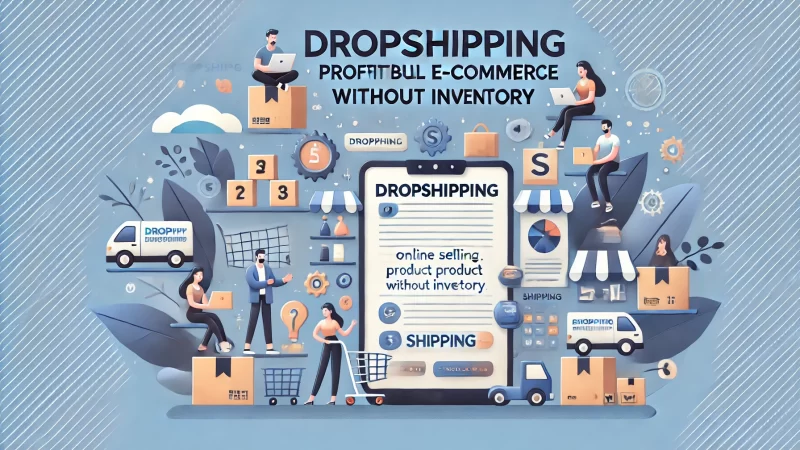Table of Contents
Are you searching for good ways to earn money online that are flexible, sustainable, and potentially lucrative? With the rise of digital platforms, there are countless opportunities for those looking to earn money from home.
This guide explores the top methods, each offering unique advantages for various skill sets. Discover five solid and practical ways to boost your income through the internet.
1. Freelancing Services: A Flexible Way To Earn

Freelancing services offer one of the best ways to earn money flexibly. They allow you to choose projects, work from anywhere, and set your own hours. This method suits those who want to capitalize on their unique skills, be it writing, graphic design, or coding. Freelancers enjoy the freedom of working independently, enabling them to take control of their earnings and build a career suited to their lifestyle.
Freelancing offers a valuable pathway for those looking to make a steady income without committing to a full-time role. As demand for digital services grows, opportunities for freelancers only expand, allowing newcomers and experts alike to earn through platforms like Upwork, Fiverr, and more. Let’s explore how you can thrive in this flexible field.
Benefits Of Freelancing As A Good Way To Earn Money
Freelancing opens doors to numerous benefits, including autonomy and control over work schedules. You can pick projects based on your interests and expertise, creating a fulfilling work experience that’s adaptable to your needs. This control over project choices also reduces burnout, enhancing overall job satisfaction and allowing a healthy work-life balance.
The financial potential in freelancing is also significant. Rates can vary widely, and with experience, you can increase your earnings by working on high-value projects. Freelancers often work with clients worldwide, giving them access to diverse projects and competitive pay. I believe this flexibility and income potential make freelancing a desirable way to earn money online.
Freelancing also provides freedom to develop skills while earning. Since freelancers manage multiple clients, they gain real-world experience that builds their portfolio and opens doors to future opportunities. This continuous skill enhancement can boost credibility and attract more clients, further supporting income growth.
Freelancers benefit from the ability to network with global professionals. Each project offers a chance to expand connections, learn from clients, and enhance professional relationships. These interactions often lead to long-term partnerships and better-paying opportunities, strengthening the foundation for a sustainable freelancing career.
Popular Freelance Platforms To Start Earning Online
For beginners and seasoned freelancers, platforms like Upwork and Fiverr offer the right infrastructure to connect with clients. These websites provide a marketplace where you can showcase your services and secure projects, making them an ideal start for online earning.
Upwork caters to freelancers in a wide range of fields, including writing, web development, and marketing. Clients post project descriptions, and freelancers can bid, showcasing their skills and rates. Upwork’s robust client base and varied project offerings make it a popular choice for freelancers looking to secure consistent work.
Fiverr offers a unique setup where freelancers create “gigs” that clients can purchase directly. This approach simplifies the hiring process, especially for shorter, more specialized tasks. For those who prefer quick projects with clear deliverables, Fiverr’s gig model is particularly beneficial and can help build a steady client base.
Freelancers can also explore niche platforms tailored to specific skills. For instance, 99designs focuses on graphic design, while Toptal is ideal for experienced developers and financial experts. Using the right platform can significantly boost your chances of landing high-quality clients and growing your freelancing income.
Tips For Setting Up A Profitable Freelance Profile
Creating an effective freelance profile starts with a well-written bio that highlights your skills and experience. Clients often choose freelancers based on first impressions, so I suggest focusing on clarity and professionalism in your profile description. Use clear, concise language to show your expertise and what you can offer.
Incorporating a portfolio is essential to demonstrate your previous work quality. A solid portfolio shows clients your capabilities and gives them confidence in your work. Include varied examples to cover different types of projects, showcasing your adaptability and skill range. Clients appreciate visuals and samples, so don’t shy away from using multimedia.
Setting clear pricing and service descriptions will streamline client interactions. I recommend specifying deliverables, timelines, and any additional fees. Transparent pricing and service terms reduce misunderstandings and create a professional image, making clients more likely to choose you over competitors.
For profile visuals, use a professional photo that aligns with your brand. This small touch can build trust and enhance your profile’s appearance. Consider adding client testimonials if available, as positive feedback increases credibility and provides social proof of your expertise.
Top In-Demand Freelancing Skills For Quick Earnings
Skill selection is crucial to maximizing freelancing income. Popular skills include writing, graphic design, and digital marketing, which are consistently in high demand across industries. For those skilled in these areas, freelancing offers substantial opportunities to earn while developing expertise.
Programming and software development are highly lucrative skills in freelancing. As tech needs grow, demand for coders and developers has risen sharply, making this a profitable area. If you’re technically inclined, this skill can lead to well-paying, long-term client relationships.
Another high-demand skill is digital marketing. Specializing in SEO, social media management, or email marketing can secure consistent work, as businesses are eager to enhance their online presence. I suggest focusing on one aspect, becoming an expert in it to attract niche clients who value specialized skills.
For quick earnings, virtual assistance and customer support also have rising demand. These roles allow freelancers to work flexibly while earning a steady income. Companies seek virtual assistants to handle administrative tasks, making this a reliable choice for those looking to earn efficiently.
How To Price Freelance Services To Maximize Income
Pricing freelance services strategically is essential to maximizing income. Start by researching rates in your industry and setting competitive prices that reflect your skills and experience. I recommend a rate that’s sustainable but allows room for growth as you gain expertise.
Offering tiered pricing can appeal to different client budgets. Create packages that offer various levels of service, such as basic, standard, and premium. This approach increases client interest by providing options, allowing you to upsell as clients gain trust in your work quality.
Communicating the value of your services justifies your rates and builds client trust. For instance, if your expertise helps improve their business, make this clear during initial conversations. Position yourself as a solution to their needs rather than just another freelancer.
It’s beneficial to periodically review and adjust your pricing to reflect industry changes. Regularly increase rates as you gain experience, providing better income potential over time. Clients often respect professionals who know their worth and maintain consistent pricing strategies.
2. Affiliate Marketing: Earn Money Through Referrals

Affiliate marketing presents a profitable way to earn money online by promoting products or services. Through affiliate marketing, you earn a commission for each sale generated via your referral. It’s a low-risk approach, requiring minimal upfront costs and enabling passive income as your audience grows.
Affiliate marketing is ideal for bloggers, social media influencers, or anyone with a loyal audience. By sharing relevant products with their followers, affiliates can effectively drive sales. This method rewards those who can genuinely engage audiences, making it both profitable and rewarding.
Understanding Affiliate Marketing Basics
Affiliate marketing is based on partnerships with businesses that offer products matching your audience’s needs. You promote products using unique links, and when a user makes a purchase through your link, you earn a commission. It’s a straightforward model, ideal for those who enjoy creating content.
Effective affiliate marketing requires trust with your audience. I suggest only promoting products you believe in, as authenticity enhances your credibility and engagement. Focus on building genuine relationships with followers to increase conversion rates and earn consistent commissions.
Building traffic is essential for affiliate success. The more visitors engaging with your links, the higher your chances of making sales. This could mean creating blog posts, social media content, or email campaigns that offer real value to readers, subtly including affiliate links.
Diversifying affiliate partnerships reduces reliance on a single income source. Working with various brands across industries or niches gives you greater earning potential, and clients benefit from your promotional efforts, creating a win-win situation in affiliate marketing.
Good Affiliate Platforms To Start Earning
Affiliate platforms like Amazon Associates and ShareASale provide affiliates with numerous product choices. These platforms make it easy to find products matching your audience, allowing you to start earning without needing prior connections or arrangements.
FlexOffers and Awin are popular for affiliates who want diverse options. These platforms offer high commission rates and a vast range of brands, appealing to those aiming to maximize their earnings across various niches. Choosing the right platform can significantly impact your affiliate success.
Joining specialized affiliate programs that fit your niche can be highly profitable. For instance, if you run a tech blog, platforms like Newegg offer relevant tech-related products. Finding platforms that align with your audience’s interests increases engagement and commission potential.
I advise looking for affiliate platforms that offer support resources, such as marketing tools or analytics. These resources help affiliates optimize their strategies, giving them an edge in attracting clicks and conversions, ultimately boosting their income.
How To Choose Profitable Products For Promotion
Selecting profitable products requires understanding your audience’s needs and interests. Start by analyzing what products resonate with your niche, focusing on items that add value to your followers. I recommend promoting products that genuinely solve problems or enhance lives.
It’s essential to research the commission rates and average conversion rates for each product. High-commission items can boost your income, but only if they align with your audience. Balancing product relevance with profitability ensures better engagement and sustainable earnings.
Look for products with consistent demand rather than short-term trends. Evergreen products have a longer earning potential, allowing you to build a stable income stream. I suggest focusing on quality products that your audience will value over time.
Consider testing products before promoting them. This approach allows you to gauge audience interest and receive feedback. Testing also gives you firsthand experience, making your recommendations more authentic, which can boost trust and conversions with your audience.
Content Strategies To Drive Affiliate Income
Creating valuable content is key to affiliate success. Start by integrating affiliate products into helpful blog posts, guides, or tutorials that solve common reader problems. I recommend crafting content that educates, inspires, and subtly introduces the product as a solution.
Email newsletters allow you to share recommendations directly with your audience. A well-crafted email featuring valuable tips, along with product links, builds trust and encourages clicks. Regular updates keep your audience engaged and more likely to act on recommendations.
Incorporating product reviews gives readers an in-depth look at the benefits and drawbacks. I advise honest, detailed reviews, as they help potential buyers make informed decisions. Engaging reviews demonstrate transparency and build your credibility, which strengthens audience loyalty.
Social media is a powerful tool for affiliate marketing. Sharing short, value-packed posts or stories featuring products keeps them top of mind for your audience. Visual platforms like Instagram or Pinterest work well for driving traffic to affiliate links and reaching a broader audience.
Tips For Growing Affiliate Income Sustainably
To build sustainable affiliate income, focus on products that align with your niche and audience needs. Promoting relevant products not only drives clicks but also enhances trust. I suggest creating a curated list of products that resonate with your audience’s interests.
Consistency is crucial. Regularly creating content around affiliate products, whether through blog posts or social media, keeps your audience engaged. Establishing a content schedule allows you to plan ahead and maintain a steady flow of recommendations and insights.
Building an email list supports long-term growth. I recommend nurturing your subscribers with valuable, non-sales-focused content. When you occasionally introduce affiliate links, your audience is more likely to respond positively, as they trust your recommendations.
Tracking performance and making adjustments are essential to affiliate growth. Use analytics to understand what’s working and refine your approach. By focusing on high-performing products and effective strategies, you can gradually increase your affiliate income over time.
3. Online Courses: Create And Sell Knowledge

Creating and selling online courses allows you to share your knowledge while earning. For those with specialized skills or experience, courses offer a powerful way to monetize expertise. I suggest considering this path if you enjoy teaching and engaging with others.
Online courses cater to people looking for flexible learning options. As more learners turn to online education, demand continues to grow, making it a viable earning option. From platforms to pricing, several strategies can help you succeed with your course.
Steps To Plan And Create A Successful Online Course
Start by identifying a specific topic that aligns with your expertise and fills a gap in the market. Planning involves outlining course modules, structuring lessons, and considering what students will achieve after completing each section. Think from a learner’s perspective for maximum impact.
Next, create engaging content that caters to various learning styles. Combining videos, quizzes, and downloadable resources adds value and keeps students engaged. I recommend balancing theory with practical examples, ensuring your course remains informative and easy to follow.
Test your course content by offering it to a small group before launching. Collecting feedback helps refine the material and enhances user experience. It’s an effective way to ensure the course meets student expectations, making it easier to market and sell successfully.
Organizing your course content into modules and lessons helps students navigate through it smoothly. Using a logical structure with clear learning outcomes for each section allows learners to track progress, increasing satisfaction and encouraging positive reviews and referrals.
Best Platforms To Sell Online Courses Profitably
Platforms like Udemy and Teachable provide excellent options for hosting and selling your course. These platforms handle much of the technical setup, allowing you to focus on content creation. I recommend researching each to find the best fit for your goals and course type.
Teachable allows creators to build branded websites and manage course sales, giving greater control over the student experience. With Teachable’s analytics, creators can track enrollment, progress, and engagement, offering insights to refine and improve courses over time.
Udemy offers access to a broad audience, which can help increase course sales. As a marketplace, Udemy promotes courses directly, saving creators from some marketing efforts. This can be beneficial for beginners seeking to gain traction without extensive advertising.
If you prefer maximum control, platforms like LearnWorlds offer a wide range of customization options, including quizzes, certificates, and community features. This level of flexibility makes it a great choice for those building a unique and interactive learning experience.
Tips For Marketing Your Online Course Effectively
Marketing your online course starts with defining a clear target audience. Understanding their needs allows you to tailor messaging that resonates and drives sales. I suggest using testimonials or case studies to build credibility and connect with potential students authentically.
Social media provides a powerful avenue for promoting your course. Share valuable insights and snippets from your course content to spark interest. Platforms like LinkedIn and Instagram are great for reaching specific demographics, while engaging stories can highlight your teaching style.
Email marketing is another effective tool for online course promotion. Build an email list and nurture it with valuable content related to your course topic. I recommend sharing free resources or offering a sneak peek of your course to convert subscribers into buyers.
Collaborating with influencers or bloggers in your niche can also boost visibility. Look for individuals with engaged audiences that align with your course’s subject. Influencer partnerships introduce your course to a wider audience, helping you build credibility and increase sales.
How To Price Courses To Boost Earnings Potential
Setting the right price requires a balance between value and accessibility. Researching competitors’ pricing provides a benchmark and helps you position your course competitively. Pricing too low may undervalue your work, while premium pricing reflects course quality and thoroughness.
Offering multiple pricing tiers can appeal to a broader audience. Create packages with varying levels of access, like basic, premium, and VIP. Each tier can include additional resources or one-on-one coaching sessions, giving students options based on their budgets and needs.
Regular promotions can increase enrollment by creating a sense of urgency. Limited-time discounts or holiday offers encourage hesitant buyers to act. These promotions are ideal for attracting initial students, generating momentum, and earning testimonials for future course iterations.
Consider offering a money-back guarantee to reduce risk for new students. This approach can boost sign-ups, as it demonstrates your confidence in the course quality. Transparency helps build trust, making potential students more comfortable with the purchase.
Common Mistakes To Avoid When Selling Courses
A common mistake is failing to define clear learning objectives. Students should know exactly what they’ll gain from the course. Lack of clarity here can lead to dissatisfaction and refunds, so it’s essential to set expectations upfront for a positive learning experience.
Overloading courses with excessive content can overwhelm students. I suggest focusing on essential information and keeping lessons concise. Quality over quantity is key; well-organized, clear content keeps learners engaged and increases completion rates.
Ignoring feedback limits course improvement. Actively seeking student reviews provides insights that can refine and enhance the material. Continuous improvement shows your commitment to students’ success, which can increase positive reviews and lead to more enrollments.
Neglecting to market your course effectively is a missed opportunity. Many great courses fail to reach audiences due to poor promotion. Consistent marketing efforts across channels are vital to drive traffic and build awareness of your course offering.
4. Dropshipping: Profitable E-commerce Without Inventory

Dropshipping is a profitable e-commerce model that allows you to sell products without handling inventory. This approach lets you focus on marketing and sales while suppliers fulfill orders. For those seeking a hands-off business, dropshipping offers excellent earning potential.
With dropshipping, there’s minimal startup cost, as you won’t need warehousing or upfront product investments. This makes it an attractive option for beginners who want to explore e-commerce. By focusing on niche selection and marketing, dropshipping can become a viable income source.
What Makes Dropshipping A Good Way To Earn Money
Dropshipping’s primary appeal lies in its simplicity. You partner with suppliers who manage inventory and shipping, so you can focus on customer acquisition and retention. I suggest this model for those who want to test e-commerce with minimal risk and investment.
The flexibility to offer a wide range of products also makes dropshipping profitable. By responding to market trends and customer preferences, you can adjust your product lineup as needed. This adaptability allows you to capture different customer segments and maximize sales.
Scalability is another advantage, as dropshipping doesn’t require more storage or logistics as sales grow. This scalability lets you expand your offerings quickly without additional operational overhead, making it a solid business model for those wanting rapid growth.
Building a strong brand helps differentiate your dropshipping business from competitors. I advise focusing on quality customer service and branding to create a loyal customer base. This focus on branding can improve customer satisfaction and lead to repeat purchases.
Best Platforms For Starting A Dropshipping Business
Shopify is a popular choice for dropshipping, offering a range of integrations like Oberlo to help you source products. Shopify’s user-friendly interface and e-commerce features simplify the process, making it an ideal starting point for beginners looking to enter dropshipping.
Spocket specializes in sourcing high-quality products from local suppliers, making it a great choice for dropshippers targeting North American or European markets. I believe this focus on reliable suppliers enhances customer experience and helps avoid common dropshipping pitfalls.
AliExpress provides a vast array of affordable products, often favored for price-sensitive markets. Many dropshippers use AliExpress due to its extensive product range. It’s a budget-friendly option, ideal for those testing different products and niches without significant upfront investment.
SaleHoo offers access to a directory of trusted suppliers, focusing on high-quality products. This platform is excellent for dropshippers seeking verified suppliers and better customer service. It’s worth exploring if you aim to build a reputable, high-end brand.
Niche Selection Tips For Dropshipping Success
Choosing the right niche is crucial for dropshipping success. A well-defined niche helps you target specific customer needs, which boosts conversion rates. I suggest focusing on trends, customer demand, and market competition when selecting a niche for optimal success.
Researching competitors gives insight into what’s already popular and profitable. Analyzing their products and marketing strategies reveals gaps in the market. Finding a unique angle or underserved need helps you stand out, attracting a loyal customer base in your niche.
Select products with consistent demand rather than short-lived fads. I recommend looking for evergreen products that offer long-term sales potential. This approach stabilizes revenue and reduces the need to frequently update your catalog, saving you time and resources.
Use Buzzsumo or market research tools to validate your niche. These resources provide valuable data on search volume, interest levels, and seasonal fluctuations. Data-backed decisions enhance your chances of selecting a profitable niche that appeals to a broad audience.
How To Price Dropshipped Products For High Margins
Pricing effectively is essential to profitability in dropshipping. Start with a basic markup formula, typically around 2-3 times the product cost. This approach ensures you cover expenses while generating a healthy profit margin. I recommend adjusting pricing based on perceived product value.
Offering premium products justifies higher pricing and increases profit potential. Adding unique branding or packaging elevates the perceived value, allowing you to charge more. Customers often pay more for quality, so focus on providing value through branding and customer service.
Consider offering discounts and promotions to attract customers. Strategic price reductions or bundle offers create urgency, driving conversions without significantly affecting your margins. Seasonal promotions or flash sales are great ways to boost sales and capture more leads.
It’s important to monitor competitor prices to stay competitive. Regularly checking the market ensures your pricing remains attractive, without being undercut by others. By balancing competitive pricing with quality, you can retain customer interest and maintain profitability.
Effective Marketing Tips For Dropshipping Stores
Effective marketing is vital to the success of a dropshipping store. Social media ads, particularly on Facebook and Instagram, are popular choices. These platforms allow precise targeting, enabling you to reach audiences who are likely to engage with your products. Testing different ad creatives can maximize conversions.
Content marketing, like blogging or video creation, builds a strong online presence and attracts organic traffic. I advise creating helpful, niche-focused content that appeals to your target audience. This approach not only drives traffic but also enhances brand credibility over time.
Email marketing helps you stay connected with customers and promote new products. Collecting emails from website visitors allows you to send updates and promotions, encouraging repeat business. Building a loyal subscriber base supports long-term growth and increases customer retention.
Influencer marketing offers another avenue for dropshipping success. Partnering with influencers in your niche exposes your brand to their followers. Look for influencers whose audience aligns with your target market, as their endorsement can boost credibility and drive significant traffic.
5. Blogging: Earn Money With Engaging Content

Blogging offers a flexible and creative way to earn online by sharing valuable content. As a blogger, you have control over topics, audience, and monetization strategies. I recommend blogging for those passionate about writing and sharing insights with a wide audience.
A successful blog requires commitment and consistent effort, especially in the early stages. With engaging content and the right monetization strategies, blogging can generate a reliable income. From affiliate marketing to ad revenue, various methods can make blogging a profitable venture.
How To Start A Blog For Income Generation
Starting a blog involves choosing a niche and creating content that resonates with readers. Focus on topics you’re knowledgeable about and that interest your audience. This approach makes it easier to produce high-quality content that keeps readers coming back.
Selecting the right platform, like WordPress, provides flexibility in customizing your blog. I recommend a self-hosted option to give you full control over monetization and design. A professional setup enhances credibility and appeals to both readers and potential advertisers.
Developing a consistent posting schedule builds reader loyalty. Regularly publishing fresh content keeps your blog relevant and helps it grow organically. I suggest planning a content calendar to stay organized and ensure a steady stream of posts that engage your audience.
Promoting your blog through social media and email lists helps attract visitors. Sharing each post on platforms like Facebook and Twitter drives traffic, while email lists keep readers updated. Building an audience takes time, but these strategies support sustainable growth.
Key Blogging Niches For Quick Monetization
Certain niches are more profitable than others, particularly those with strong affiliate opportunities. Popular niches include personal finance, health, and technology. I suggest choosing a niche where you can provide unique insights, making your blog stand out in a competitive space.
Lifestyle blogs covering beauty, fitness, or travel also offer good monetization potential. These niches allow for collaborations, sponsorships, and product promotions. Focus on creating value-driven content that appeals to readers’ interests while remaining authentic.
Educational niches, such as career development or DIY, are excellent for building authority. These topics attract a dedicated audience seeking valuable guidance, which improves engagement rates. If you’re knowledgeable in a specific field, an educational niche can drive traffic and monetization.
Niche selection affects how you monetize. High-traffic niches support ad revenue, while specialized topics often do better with affiliate marketing. Consider your interests and expertise, as they will help you create content that attracts and retains a loyal readership.
Tips For Growing Blog Traffic To Boost Income
Growing blog traffic requires a blend of SEO and promotional tactics. Research relevant keywords to optimize your posts for search engines. I recommend focusing on long-tail keywords to attract highly interested readers who are more likely to engage and convert.
Social sharing is essential for expanding reach. Use eye-catching visuals and headlines to make posts shareable on platforms like Pinterest and Facebook. Engaging social content can drive significant traffic, increasing your blog’s visibility and audience base.
Networking with other bloggers opens doors for collaboration and cross-promotion. Guest posting or link exchanges help you tap into new audiences and boost your site’s authority. Engaging with other bloggers fosters community while improving your blog’s SEO.
Building an email list allows you to engage with readers directly. Send out newsletters featuring recent posts, exclusive tips, or product recommendations. A well-nurtured email list drives consistent traffic, keeping readers connected to your blog and returning regularly.
Good Monetization Methods For New Bloggers
Affiliate marketing is a popular way to monetize blogs. By recommending relevant products, you earn a commission on sales made through your links. I suggest focusing on products that align with your content, as this maintains authenticity and builds reader trust.
Display ads are another revenue source for bloggers, particularly those with high traffic. Services like Adsterra or Hilltopads pay based on page views. While ads require a substantial audience, they’re a passive income stream that grows with your readership.
Sponsored posts allow bloggers to work directly with brands, featuring products or services in their content. I recommend disclosing sponsorships to maintain transparency. Sponsored content is a great income source, but it’s important to choose partnerships that add value to readers.
Selling digital products, such as e-books or guides, also generates income. If you have expertise in a particular area, creating a product tailored to your audience can be profitable. This approach provides value to readers and gives you full control over pricing and sales.
Best Practices For Blogging Success And Income
Consistency is key to blogging success. Posting regularly builds reader loyalty and improves SEO rankings. I recommend setting a schedule that’s realistic and manageable, keeping content fresh and helping your blog grow steadily over time.
Engaging with readers creates a community around your blog. Responding to comments and encouraging discussions helps build rapport, making readers feel valued. Community fosters trust, encouraging readers to return, which supports income generation through loyalty.
Experimenting with content types keeps your blog dynamic. Try long-form posts, listicles, and video content to see what resonates. Offering variety increases engagement and enhances user experience, which is essential for retaining a diverse audience.
Monitoring performance metrics provides insights into what works and what doesn’t. I advise using tools like Google Analytics to track visitor behavior, top-performing posts, and traffic sources. This data-driven approach helps optimize content for better reach and income potential.






